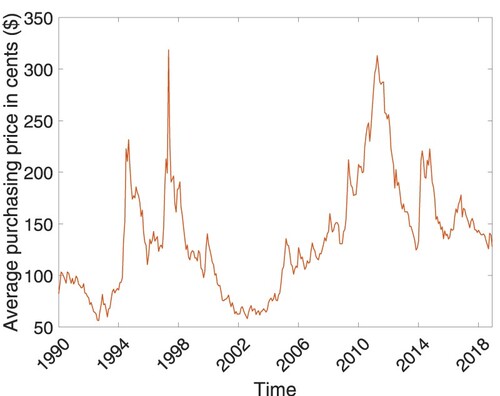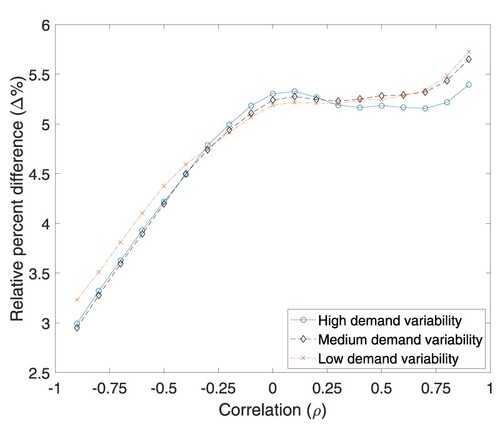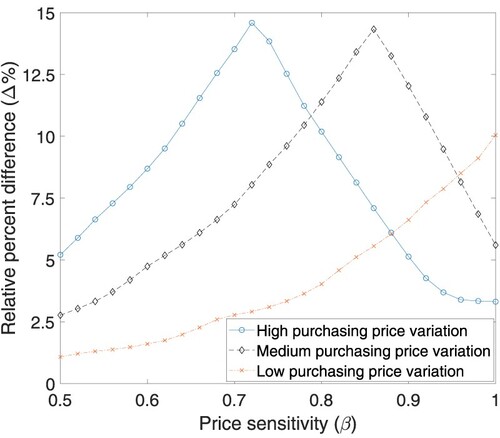Figures & data
Figure 1. Monthly averages of International Coffee Organization prices for Colombian Milds in U.S. cents per lb.

Table 1. A Comparison of Gayon et al. (Citation2009), Karabağ and Tan (Citation2019), and This Study.
Figure 2. Problem illustration.

Table 2. Sets, indices, and parameters considered in the LP formulation.
Table 3. The scenarios considered in the numerical analysis.
Table 4. The average time spent in environment state .
Figure 3. The demand variability and correlation effects on (a) the average profit (α), (b) the average raw material inventory level (), (c) the average final product inventory level (
), and (d) the average price (
).
![Figure 3. The demand variability and correlation effects on 3(a) the average profit (α), 3(b) the average raw material inventory level (E[i1]), 3(c) the average final product inventory level (E[i2]), and 3(d) the average price (E[s]).](/cms/asset/6be26b80-57be-4938-9997-ac0091c57065/tprs_a_2152127_f0003_oc.jpg)
Figure 4. The price sensitivity and procurement price variability effects on (a) the average profit (α), (b) the average raw material inventory level (), (c) the average final product inventory level (
), and (d) the average price (
).
![Figure 4. The price sensitivity and procurement price variability effects on 4(a) the average profit (α), 4(b) the average raw material inventory level (E[i1]), 4(c) the average final product inventory level (E[i2]), and 4(d) the average price (E[p]).](/cms/asset/2719c971-63e5-4945-b1e1-fcd96d56a57a/tprs_a_2152127_f0004_oc.jpg)
Figure 5. The production rate and holding cost effects on (a) the average profit (α), (b) the average raw material inventory level (), (c) the average final product inventory level (
), and (d) the average price (
).
![Figure 5. The production rate and holding cost effects on 5(a) the average profit (α), 5(b) the average raw material inventory level (E[i1]), 5(c) the average final product inventory level (E[i2]), and 5(d) the average price (E[p]).](/cms/asset/80a2ceac-ab5e-46a0-b520-08e9e1fce7ff/tprs_a_2152127_f0005_oc.jpg)
Figure 6. The demand variability and correlation effects on the relative difference between dynamic and static pricing strategies.

Figure 7. The price sensitivity and procurement price variability effects on the relative difference between dynamic and static pricing strategies.

Figure 8. Effects of production rate and holding cost on the relative difference between dynamic and static pricing strategies.

Data availability statement
Data sharing is not applicable to this article as no new data were created or analysed in this study.
